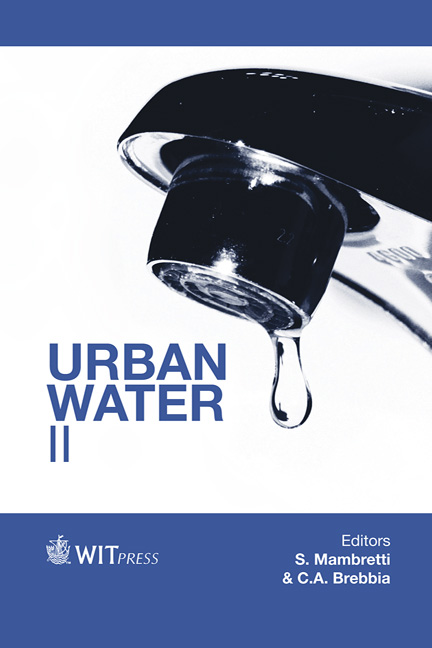Dealing With Uncertainties In Losses Assessment In Water Supply Networks: Preliminary Results
Price
Free (open access)
Transaction
Volume
139
Pages
10
Published
2014
Size
479 kb
Paper DOI
10.2495/UW140121
Copyright
WIT Press
Author(s)
G. Becciu, S. Mambretti, P. S. Martins & R. L. Moraes
Abstract
In many countries water losses can be much larger than 50%, with great economic losses because of the energy required for pumping and for the primary treatments that very often are required. Methodologies have been developed in order to identify the areas where losses are most expected, limiting the excavations as far as possible. To this end, the authors developed a methodology which requires the installation of a number of instruments on the network, in order to measure pressures and discharges; then, the demands at the nodes are changed by means of optimization methods and the network is simulated with a computer program, in order to match the readings of the instruments; losses are higher where the demands have been most increased. In previous papers, the authors tested different evolutionary methods to identify the areas where losses are most expected, comparing results from theoretical networks that were, from all the other aspects, exactly identical. In the real world, unfortunately, differences from the simulated the real networks are not limited to the discharge demands, but other uncertainties are present. The most evident uncertainty is related to pipe roughness, which can be considered a parameter of the model; sometimes even the diameters are listed wrong. In the paper, the robustness of the proposed method is tested using networks where roughness parameters and diameters are different, changing the roughness parameter in order to determine the influence of the errors in the evaluation of the areas where losses are most expected. Keywords: water supply networks, water losses, evolutionary computation, hydraulic modelling, models uncertainties.
Keywords
water supply networks, water losses, evolutionary computation, hydraulic modelling, models uncertainties.





